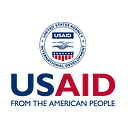How Countries Are Institutionalizing National Priority Setting for Universal Health Coverage
The LHSS-JLN Learning Exchange on Institutionalizing Explicit Processes for Setting National Health Priorities
By Sarah Insanally and Julia Watson
To make faster progress towards universal health coverage even as national budgets get tighter and external funding declines, governments of low- and middle-income countries need to consistently set clear national health priorities, and then bring health policies, strategies, plans, and resources into alignment.
Ministries of health know that priority setting is important, but explicit priority-setting processes — processes that are inclusive and fair, transparent and accountable, informed by evidence, and realistic — often are not institutionalized. In other words, they are not routinely incorporated in strategic planning or reflected in subsequent budgets.
Earlier this year, health sector practitioners from eight countries met to tackle the issue as participants in the Institutionalizing Explicit Processes for Setting National Priorities Learning Exchange, an initiative led by the USAID Local Health System Sustainability Project (LHSS) in collaboration with the Joint Learning Network for Universal Health Coverage (JLN).
The learning exchange included health practitioners from Bangladesh, Ethiopia, Lao PDR, Malaysia, the Philippines, Rwanda, South Africa, and Thailand.
The first blog in this series described the four critical elements of explicit and institutionalized priority-setting processes that learning exchange participants identified, namely: 1) a framework and structure, 2) stakeholder engagement mechanisms, 3) use of evidence, and 4) links to plans and budgets. This blog shares learning from participating countries about how these elements feature in the processes they use now.
Common features
Learning exchange countries use priority-setting processes that are designed to help them achieve national objectives and international commitments, such as the Sustainable Development Goals (SDGs). While these processes differ across countries in their steps and in the extent to which they generate priorities that are reflected in health plans and budgets, we found the following commonalities across the countries:
A clear mandate, scope, budget, and roadmap for a consultative process to identify priorities exists for the health sector plan and budget, with clear roles and responsibilities for the Ministry of Health. The Asian countries — Lao PDR, Malaysia, the Philippines, and Thailand — have more tightly defined processes that are strongly linked to national development strategies. There is relatively little room for adaptation from cycle to cycle, for example, in Thailand’s well established, 15-step priority-setting process for the 20-year National Strategic Plan for Public Health. In Lao PDR, the priority-setting process is consistently followed for the development of each national health plan and is guided by 11 indicators for monitoring progress toward the SDGs.
The sub-Saharan African countries — Ethiopia, Rwanda, and South Africa — tend to have less rigid but nevertheless formal and well-defined priority-setting processes. The planning process for Rwanda’s six-year Health Sector Strategic Plan, for example, is led by the Ministry of Health planning department and follows guiding principles and steps set out in the National Guide for the Health Sector Policy and Strategic Plan Development.
Evidence is collected and used as a basis for identifying priorities. For example, Malaysia and South Africa use existing studies, surveys, and surveillance data to develop a situation analysis of the health sector. As a first step, Ethiopia generates a country situation analysis based on a review of performance under the previous Health Sector Transformation Plan as well as a SWOT analysis and stakeholder analysis. Some countries make efforts to share data with stakeholders. Thailand uses digital data sharing platforms and in South Africa, the media is a key partner in communicating with the public about health sector priority setting.
Stakeholder engagement is an important step that all countries begin early in the process. Ethiopia uses stakeholder engagement structures at all levels of the health system to ensure input from the district and regional levels. In the Philippines, government agencies are mandated to include civil society in budget formulation. In Malaysia, practitioners use various analytical tools to ensure an inclusive and equitable consultative process.
Looming challenges
In addition to these positive features, two common challenges loomed large for the learning exchange countries. While they all routinely engage stakeholders, all said they would like to institutionalize a more inclusive process. For example, Lao PDR would like more engagement with rural communities, while Thailand and the Philippines seek more involvement from private sector and civil society actors. And all the countries would like to institutionalize closer links between the priority-setting process and the planning and budgeting processes that follow.
Stay tuned for the next blog in this series to learn more about promising practices to tackle the first of these challenges: institutionalizing strategic identification and engagement of key stakeholders.
About the authors:
Sarah Insanally, DrPH, is a health systems specialist on the LHSS Project.
Julia Watson, PhD, is a health economics and financing specialist on the LHSS Project.
